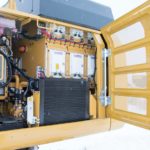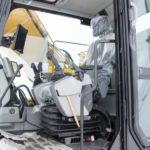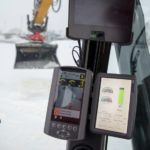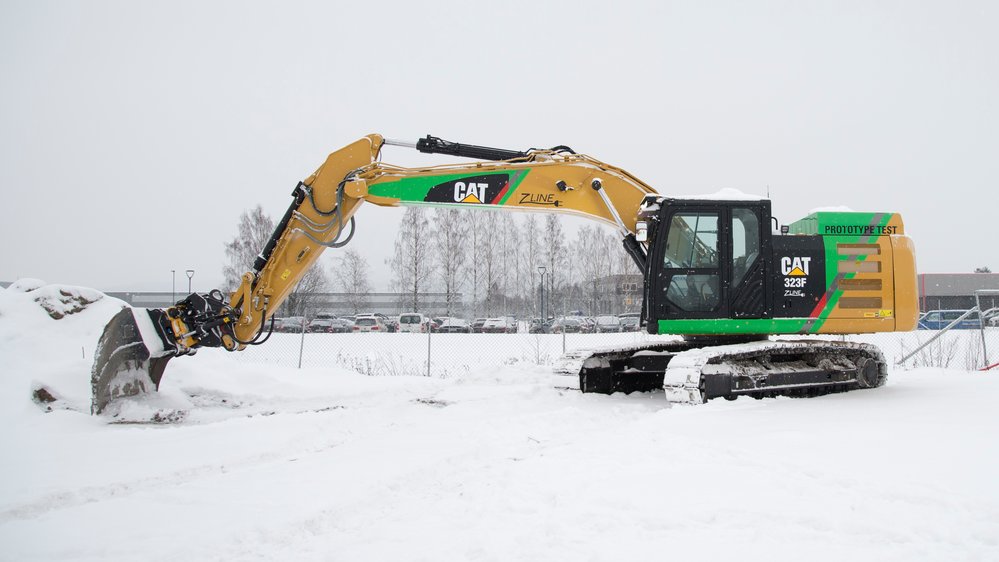
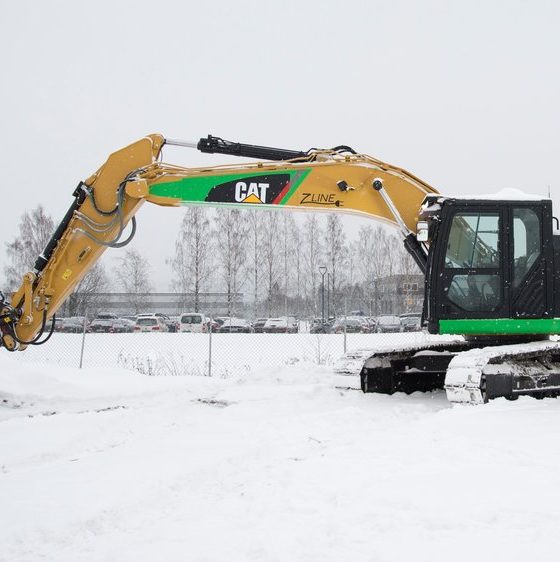
Lifestyle
World’s first industrial electric excavator has a 300 kWh battery pack that triples Tesla’s P100D
Pon Equipment based in Gjelleråsen, Norway has converted an industrial diesel-powered excavator to operate on batteries alone, the first of its kind. According to the company’s CEO, Erik Sollerud, the machine uses a 300 kWh battery pack that’s three times the capacity of Tesla’s 100 kWh battery that’s found in its flagship Model S and Model X vehicle. After an eight month development process, the first of eight excavators is ready for delivery to Norway’s largest construction company, Veidekke. As a company motivated by the impact of emissions on the environment, Pon Equipment is helping pave the way for an era of emissions-free construction equipment around the world.
The base model used for the electric conversion is the Cat® 323 Hydraulic Excavator, a 28-ton machine built by American construction and mining equipment manufacturer Caterpillar. As perhaps can be expected, swapping the original 1 ton C7.1 ACERT industrial engine for 3.4 tons of batteries came with several challenges. The team at Pan first had to find batteries that could withstand the rigors of construction work, ultimately opting for the types used in boats and submarines. The torque was also problematic and had to be scaled back to behave more like a diesel. In an electric car, high torque gives rapid acceleration, but in an excavator, it will wear out the hydraulics and other systems from the stress.
A full charge on the Caterpillar 323F Z-line (zero emission) – Pan’s revised name for the modified machine – will keep it running for 5-7 hours. For reference, a 63 amp charger will give one hour of work per one hour of charging, and another option available is to keep the machine connected to power during the entirety of operation, all details provided by Sollerud as reported by Ole Henrik Johansen of Norwegian tech website Tek.no. The machine includes a built-in 400V charger.
- Pon Equipment’s modified electric excavator at work during testing. | Credit: Ole Henrik/Tek.no
- The battery panel of Pon Equipment’s modified electric excavator. | Credit: Ole Henrik/Tek.no
- The cabin of Pon Equipment’s modified electric excavator. | Credit: Ole Henrik/Tek.no
- The battery monitor for Pon Equipment’s modified electric excavator. | Credit: Ole Henrik/Tek.no
- The charging port on Pon Equipment’s modified electric excavator, shown by CEO Erik Sollerud. | Credit: Ole Henrik/Tek.no
Also, a feature of the excavator’s electric power source is the noise or rather lack of it. During operation, only a low hum and hydraulic pump actions are heard from the 323F Z-line itself, and a swapped out fuel gauge for a battery monitor is the only obvious difference inside the machine’s cabin. While the carbon emissions are negated with the removal of the diesel engine, it appears a reduction in noise pollution is a happy bonus. Each machine is estimated to cost about $650,000.
Caterpillar was supportive of Pon’s modification project, working with the company throughout the process – the industrial equipment manufacturer reportedly has an interest in developing a line of electrically powered machines. Pon has also made it clear that their goal was never to replace the Cat® 323, just create a carbon-neutral option. In a press conference on Monday, Sollerud explained, “We do not want to invent a new excavator. Cat® 323F is one of the world’s best excavators. We only want it in an emissions-free version, with the same performance as the diesel-powered.” Until Caterpillar and companies like it finalize and release its battery-powered fleet into the market, Pon Equipment will hold the title of the first and only producer of clean energy construction excavators.
Watch the below video to see the electric excavator in action:

Lifestyle
Tesla Model S Plaid battles China’s 1500 hp monster Nurburgring monster, with surprising results
There is just something about Tesla’s tuning and refinement that makes raw specs seem not as game-changing.

The Tesla Model S Plaid has been around for some time. Today, it is no longer the world’s quickest four-door electric sedan, nor is it the most powerful. As per a recent video from motoring YouTube channel Carwow, however, it seems like the Model S Plaid is still more than a match for some of its newer and more powerful rivals.
The monster from China
The Xiaomi SU7 Ultra is nothing short of a monster. Just like the Model S Plaid, it features three motors. It also has 1,548 hp and 1,770 Nm of torque. It’s All Wheel Drive and weighs a hefty 2,360 kg. The vehicle, which costs just about the equivalent of £55,000, has been recorded setting an insane 7:04.957 at the Nurburgring, surpassing the previous record held by the Porsche Taycan Turbo GT.
For all intents and purposes, the Model S Plaid looked outgunned in Carwow’s test. The Model S Plaid is no slouch with its three motors that produce 1,020 hp and 1,420 Nm of torque. It’s also a bit lighter at 2,190 kg despite its larger size. However, as the Carwow host pointed out, the Model S Plaid holds a 7:25.231 record in the Nurburgring. Compared to the Xiaomi SU7 Ultra’s record, the Model S Plaid’s lap time is notably slower.
Real-world tests
As could be seen in Carwow’s drag races, however, Tesla’s tech wizardry with the Model S Plaid is still hard to beat. The two vehicles competed in nine races, and the older Model S Plaid actually beat its newer, more powerful counterpart from China several times. At one point in the race, the Xiaomi SU7 Ultra hit its power limit due to its battery’s temperature, but the Model S Plaid was still going strong.
The Model S Plaid was first teased five years ago, in September 2020 during Tesla’s Battery Day. Since then, cars like the Lucid Air Sapphire and the Xiaomi SU7 Ultra have been released, surpassing its specs. But just like the Model Y ended up being the better all-rounder compared to the BYD Sealion 7 and the MG IM6, there is just something about Tesla’s tuning and refinement that makes raw specs seem not as game-changing.
Check out Carwow’s Model S Plaid vs Xiaomi SU7 drag race video below.
Lifestyle
500-mile test proves why Tesla Model Y still humiliates rivals in Europe
On paper, the BYD Sealion 7 and MG IM6 promised standout capabilities against the Model Y.

BYD is seeing a lot of momentum in Europe, so much so that mainstream media has taken every opportunity to argue that the Chinese automaker has beaten Tesla in the region. But while BYD sales this year in Europe are rising and Tesla’s registrations remain challenged, the raw capabilities of vehicles like the Model Y are difficult to deny.
This was highlighted in a 500-mile challenge by What Car? magazine, which showed that the new Tesla Model Y is more efficient, cheaper to run, and more reliable than rivals like the BYD Sealion 7, and even the nearly 400 KW-charging MG IM6.
Range and charging promises
On paper, the BYD Sealion 7 and MG IM6 promised standout capabilities against the Model Y. The Sealion 7 had more estimated range and the IM6 promised significantly faster charging. When faced with real-world conditions, however, it was still the Model Y that proved superior.
During the 500-mile test, the BYD nearly failed to reach a charging stop, arriving with less range than its display projected, as noted in a CarUp report. MG fared better, but its charging speeds never reached its promised nearly-400 kW charging speed. Tesla’s Model Y, by comparison, managed energy calculations precisely and arrived at each stop without issue.
Tesla leads in areas that matter
Charging times from 25% to 80% showed that the MG was the fastest at 17 minutes, while Tesla and BYD were close at 28 and 29 minutes, respectively. Overall efficiency and cost told a different story, however. The Model Y consumed 19.4 kWh per 100 km, compared to 22.2 for MG and 23.9 for BYD. Over the full trip, Tesla’s charging costs totaled just £82 thanks to its supercharger network, far below BYD’s £130 and MG’s £119.
What Car? Magazine’s testers concluded that despite BYD’s rapid sales growth and the MG IM6’s seriously impressive charging speeds, Tesla remains the more compelling real-world choice. The Model Y just offers stability, efficiency, and a proven charging infrastructure through its Supercharging network. And as per the magazine’s hosts, the Model Y is even the cheapest car to own among the three that were tested.
Watch What Car? Magazine’s 500-mile test in the video below.
Lifestyle
Tesla Cybertruck slapped with world’s least intimidating ticket, and it’s pure cringe
One cannot help but cringe and feel second-hand embarrassment at the idea of a person just driving around with a stack of these babies.

A Cybertruck parked at Stanford Shopping Center in California was recently hit with what might be the most try-hard piece of paper ever slipped under a wiper blade: a “fake citation” accusing the driver of supporting a “fascist car.”
The note, shared on X by Tesla staff program manager Ryan Torres, quickly made the rounds on X, where it quickly gained attention as an example of how not to protest.
The world’s least intimidating ticket
According to the citation, the supposed “violation” was “driving a fascist car.” The remedial action? Take the bus, call an Uber, or ride a bike. The note also dubbed Elon Musk a “chainsaw-wielding Nazi billionaire.” Now, protests against Tesla and Elon Musk have become commonplace this year, but one cannot help but cringe and feel second-hand embarrassment at the idea of a person just driving around with a stack of fake anti-Tesla/Musk citations.
Torres pointed out the irony himself in his post on X. Tesla currently employs over 140,000 Americans, and SpaceX has put the U.S. firmly back at the top of space technology. As Torres put it, maybe the person behind the world’s least intimidating ticket should “read a book on innovation before vandalizing” other people’s property.
Peak performative clownery
Not to mention that the fake ticket’s logic collapses under its own weight. EVs like the Cybertruck are literally designed to reduce emissions, not “destroy the economy.” If anything, Tesla has bolstered the United States’ economy by fueling jobs in engineering, manufacturing, and clean energy. It’s not the first time a Tesla has been the target of vandalism or politically charged notes, but this one stands out for sheer cringe value.
Torres summed it up neatly: “Peak clownery.” On that point, at least, the citation earns full marks. In a way, though, perhaps cringe fake tickets are not as bad as the literal firebombs that were being thrown at Tesla stores and cars earlier this year because some critics were gleefully misinformed about Elon Musk.

